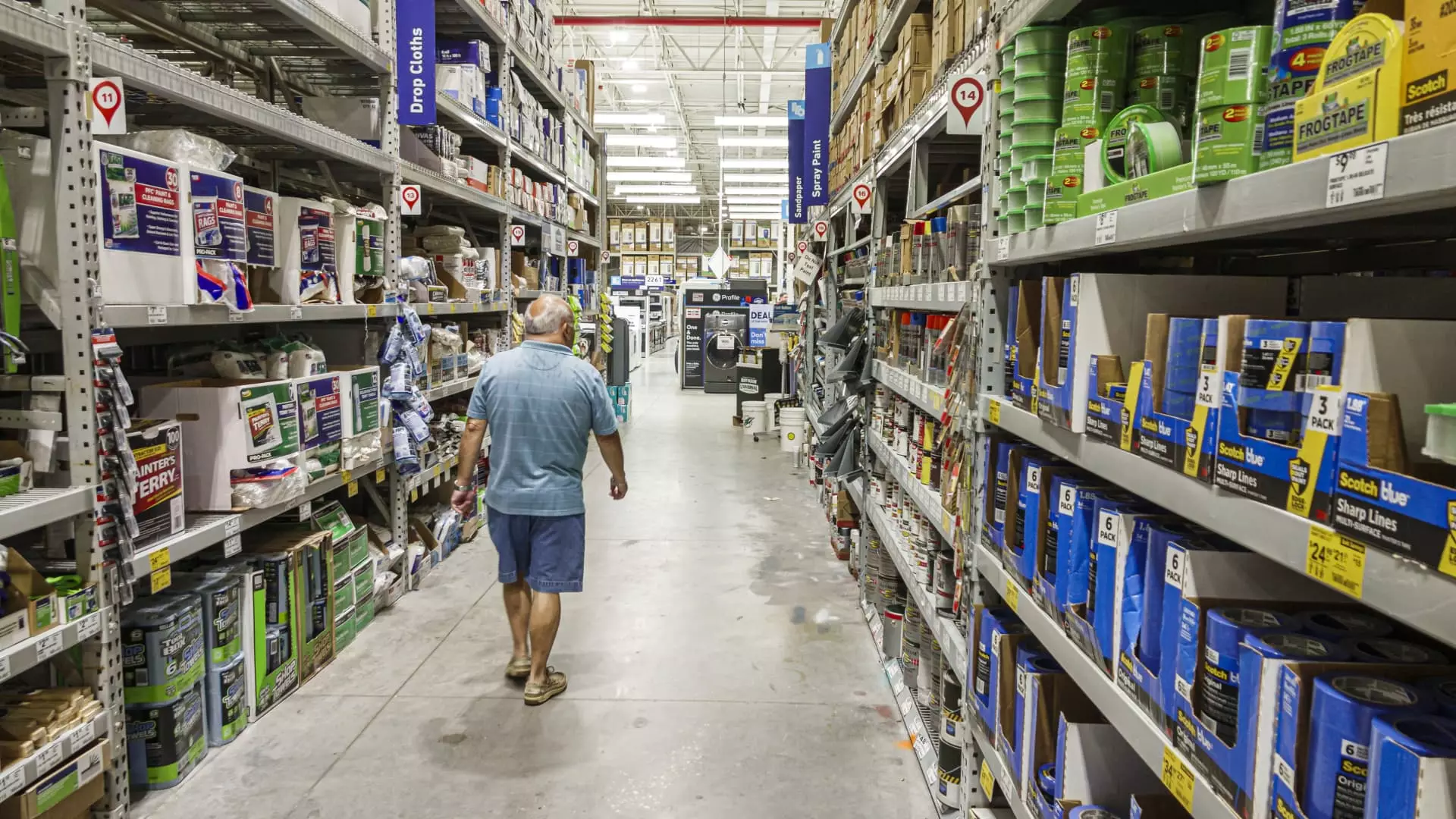Inflation, a common economic concern, has shown signs of easing throughout various sectors of the U.S. economy. A remarkable trend has surfaced: certain consumer goods and services, particularly in categories such as furniture and gasoline, have demonstrated deflation over the past year. Deflation, characterized by a decrease in prices, is an infrequent occurrence within a broad economic context, yet the last year has presented unique circumstances that have driven down prices in specific segments. As market dynamics shift back to their pre-pandemic state, analysts are observing these fluctuations with keen interest.
Mark Zandi, the chief economist at Moody’s, emphasized that while price reductions in physical goods are notable, they are not representative of the larger economic picture. Zandi cautioned that businesses are likely to maintain their pricing strategies even during periods of stagnant demand, reinforcing the notion that outright declines in prices are uncommon—even amidst economic downturns. His insights underscore a critical reality: while certain sectors experience deflation, most industries maintain a relatively stable pricing environment, complicating the consumer experience.
The onset of the COVID-19 pandemic catalyzed a dramatic uptick in demand for physical goods. As lockdowns restricted social activities, consumers redirected their spending habits, purchasing items for home improvement, comfort, and entertainment. This surge was coupled with enhanced disposable income from government aid, creating a perfect storm for increased demand. However, this heightened need collided with global supply chain disruptions, establishing a tumultuous period marked by inflated prices.
Recent reports indicate that as supply chains normalize, prices are consequently retreating. For instance, household items such as furniture and appliances have seen an average decrease of 2% and 3% respectively over the past 12 months. Similarly, other categories like sporting goods and women’s outerwear have experienced declines of 2% and 6%. A keen analysis of consumer price index (CPI) data uncovers that the once rampant prices of essential items have begun to stabilize, suggesting a pivotal transition in consumer behavior and market dynamics.
The automobile market provides a compelling case study illustrating the patterns of deflation within consumer goods. Vehicles, both new and used, have seen price reductions of 1% and 5% since September 2023, reflecting a market correction after years of significant price hikes. In mid-2021, the used car market particularly soared, witnessing a staggering increase of 45% as inflation began to escalate. Now, as supply chains recover and demand softens, the automobile landscape is realigning, providing consumers with more favorable pricing.
Moreover, the Federal Reserve’s strategic raising of interest rates has played a crucial role in this landscape. Higher financing costs have dampened consumer demand for cars, which in turn has pressured prices downward. The Fed’s recent shift towards interest rate cuts signals a potential easing of financial burdens on consumers, although the full implications of this change will unfold over time. The dynamic interplay of economic policy and consumer demand will remain paramount in shaping the automotive market’s trajectory.
Another significant factor influencing deflation in the U.S. is the strength of the dollar compared to other global currencies. A robust dollar provides American companies with a competitive edge when importing goods, reducing costs for both businesses and consumers alike. This dynamic creates an environment where imported goods become more affordable, contributing to overall price reductions on more items available in the marketplace.
Furthermore, the nature of food and energy pricing often introduces a level of fluctuation that defies simple explanations. Regular unleaded gasoline prices have decreased by roughly 16% since September 2023, while certain food categories, including fruits and frozen vegetables, are also experiencing price drops ranging from 1% to 11%. These shifts reveal the complex interdependencies within the market, where commodity prices engage in a delicate dance influenced by broader economic conditions and consumer behaviors.
As consumer trends continue to evolve, the notion of pricing normalization is likely to shape the coming months. Analysts predict that, while deflation in physical goods presents a welcome relief for consumers, the broader landscape reveals an ongoing tension between supply costs and consumer expectations. In the realm of electronic goods, consumers are benefiting from the continual enhancement of product quality, further blurring the lines between inflation and value.
Understanding these multifaceted trends is essential for consumers navigating a dynamic economy. While some sectors may flourish with reduced prices, it remains vital to consider the overarching economic forces at play. The journey ahead will be marked by resilience and adaptation, as both consumers and businesses strive to find equilibrium in an ever-evolving marketplace.

